- Best Soaker Hose Options Your Yard Truly Needs This Year - January 5, 2024
- Best Tomato Planters You Should Really Consider for Your Garden - December 21, 2023
- Best Home Depot Tomato Cages to Support Your Plants - December 16, 2023
Nothing says tropical paradise quite like a hibiscus flower. These plants with colorful and delicate flowers dazzle all who see them and create a desire to bring a piece of paradise into their home. Fortunately, it is very easy to add a little piece of the tropics into any home these days, and an Orange Hibiscus is the perfect flower to start your tropical garden.
What is an Orange Hibiscus?
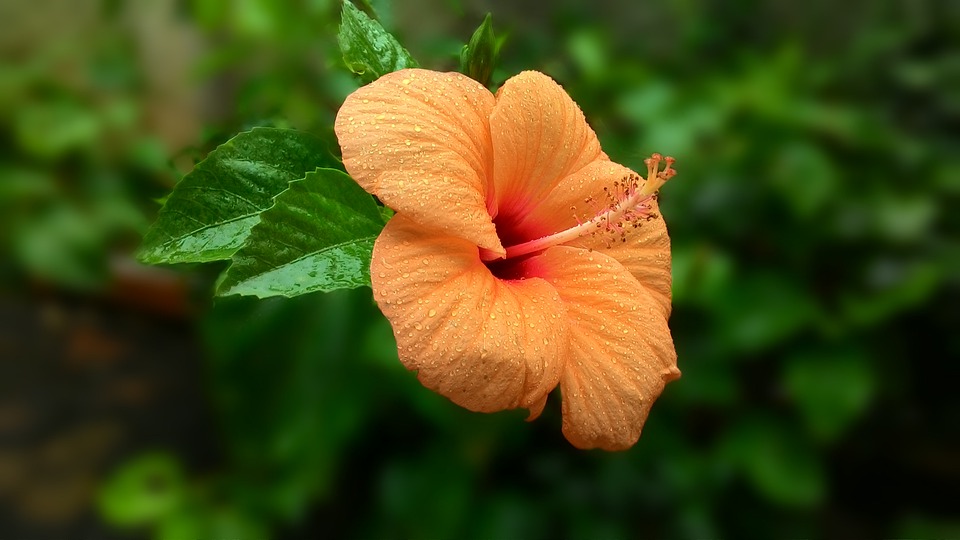
If you’re going to bring a flower into your home, it’s best to know what this flower is. Let’s take some time to familiarize ourselves with this lovely plant.
Orange Hibiscus is also known by its scientific name, Hibiscus rosa-Sinensis ‘Orange’. The name of this plant says it all. It is orange and it looks like a hibiscus. If you’re unsure of what a hibiscus looks like, we’ve got a few descriptions below that should help you.
- Hibiscus plants typically grow in a small shrub formation
- Hibiscus plants have vibrant green stems and leaves that are also smooth and glossy
- Hibiscus plants have flowers that come in a variety of colors
- Hibiscus plants have flowers that are large, usually have five petals and a long stigma
- Hibiscus plants also feature a strong and lovely aroma (of course you can’t see this, but it is such an integral part of this plant that it should not be left out)
This particular variety is native to the tropical regions of southern Asia, but it is such a hardy plant, that it can be grown in other climates as well. One glimpse of these beauties and you will be attracted to them. They are showy and feature a stunning orange blossom, they attract butterflies and hummingbirds, and they have a few other interesting uses that make them a great conversation point.
What are those interesting uses? For one, the flowers are completely edible. You can use them to make drinks, desserts, or supper, and this is a common practice in many types of cuisine.
Another interesting use of these lovely flowers is that they can be trained to grow as an espalier, which will make quite a feature wall for inside or outside your home. Added to this unique usage is the ability to set these plants in a row to create a privacy hedge. Or, you can just keep things simple by setting one in a plant container. However, you choose to arrange or use your Orange Hibiscus plant, you are guaranteed to have a beautiful piece of tropical décor.
How to Grow an Orange Hibiscus
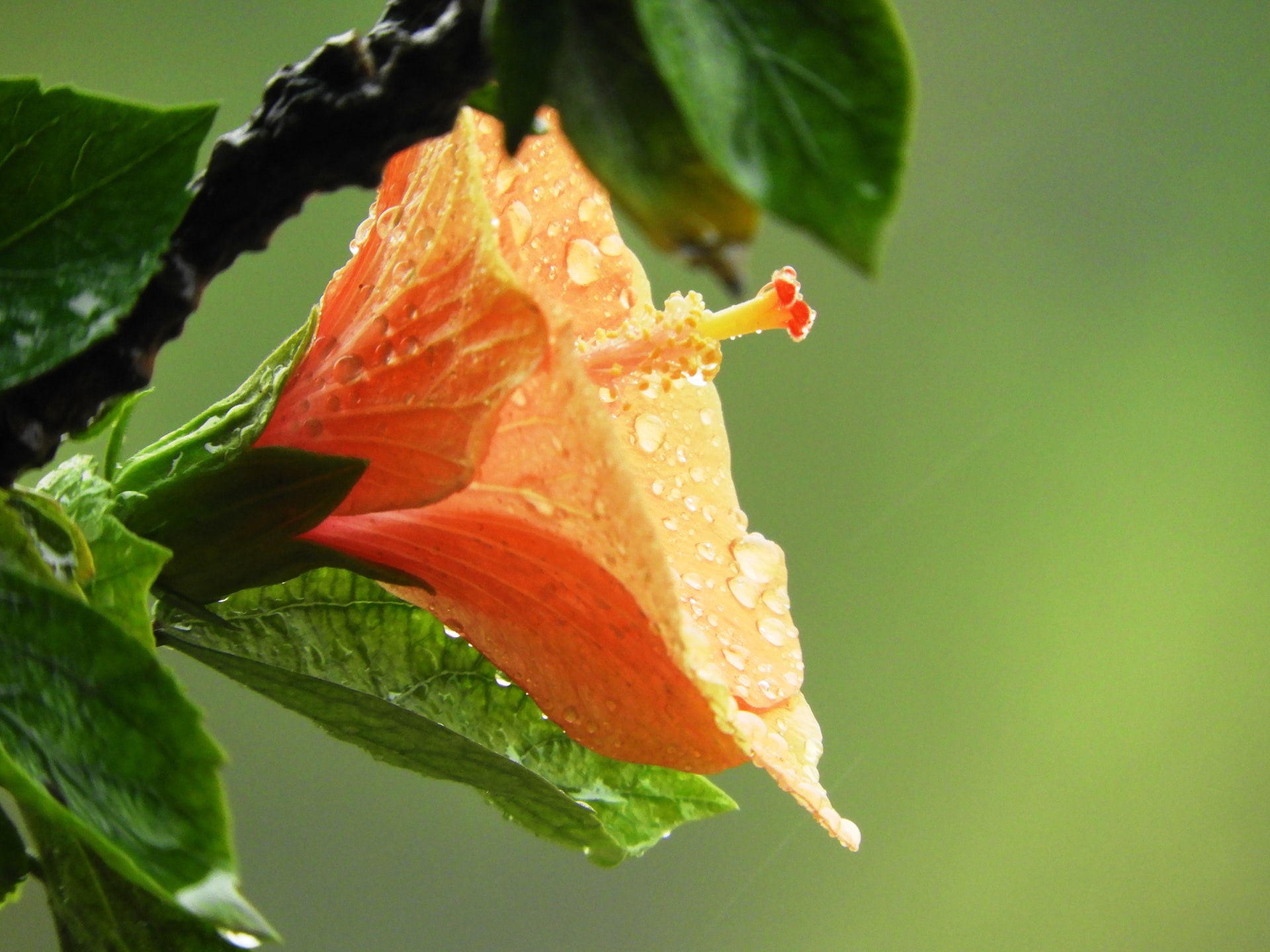
By now you are probably swooning over this plant and its stunning orange flowers. In spite of this, you may still be hesitant to bring one home before learning how to properly caring for them. There is no need to worry over this learning process because we have created a simple guide to help you learn how to care for these plants with few frustrations or a bunch of overwhelming information.
Plant the Hibiscus
Nearly every plant has some special requirement for how and where it is planted in order for it to grow its best. Orange Hibiscus is no different. When you look for a home for your new Orange Hibiscus plant, keep these requirements in mind:
Ground Plot:
Don’t forget to check which USDA Hardiness Zone you live in because this is essential information for deciding how and where to place your Orange Hibiscus plant. Remember that these plants are hardy only in zones 9 to 11. If you do not live in this range, you should keep your hibiscus in a container that can be transported indoors if it gets below 50 degrees Fahrenheit.
- Look for a ground plot that has access to 2 to 3 hours of direct sunlight in the morning
- Look for a ground plot that has shade during the afternoon
- Look for a ground plot that is not directly under a tree (trees will compete with it for water)
- Look for a ground plot that is protected from high wind
- Look for a ground plot that has soil that can be adjusted to drain off excess water
- Dig a hole in the selected ground plot that is twice as wide as the pot the hibiscus comes in and just as deep as the soil in the pot
Plant Container
- Look for a plant container that is wide and shallow (hibiscus enjoy being cozy)
- Look for a plant container that has drainage holes in its bottom
Arcadia Garden Bulb Pan
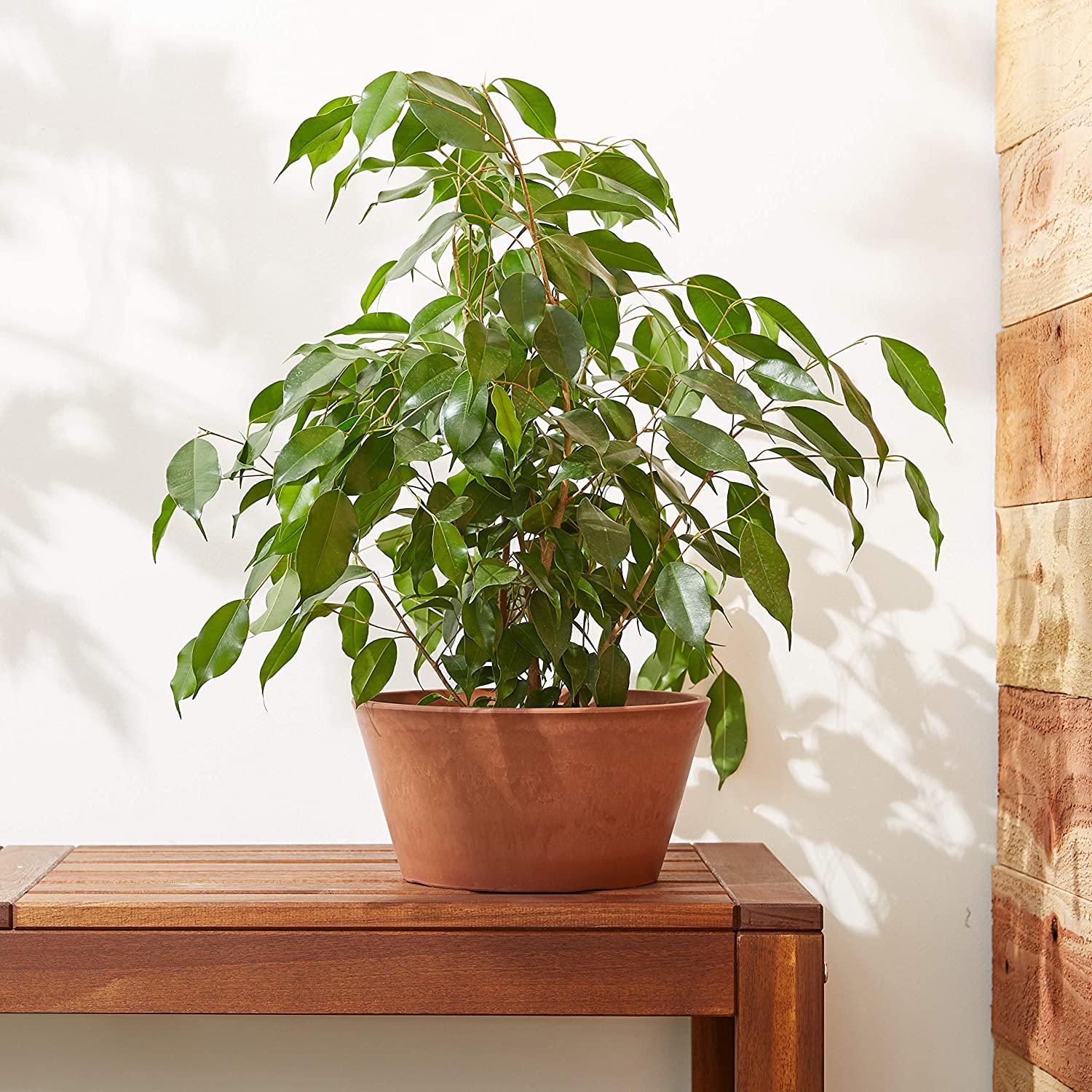
This style of pot is designed to hold plants, like hibiscus or geraniums, with root systems that grow wide and shallow. These are also environmentally friendly, weather-resistant, available in four different colors, and have the option for drainage holes.
Soil
This is a part of planting that cannot be overlooked. When it comes to hibiscus plants, you need to use potting soil that is well-draining and full of organic matter. If you plan to put your hibiscus in a container, this will be an easy step; however, if you plan to put your hibiscus in a ground plot, you may need to adjust the soil first.
Acidic & Alkaline Soil
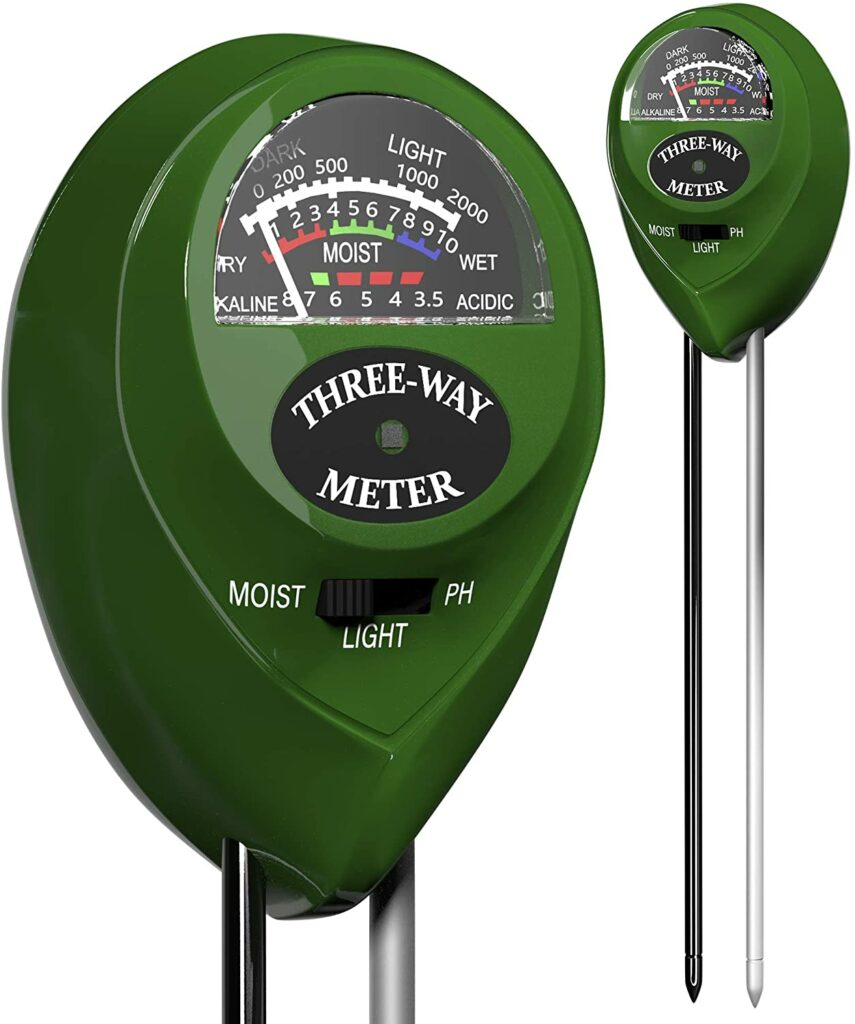
Hibiscus plants should be grown in soil with pH levels that are neutral to acidic. Use a soil pH tester to determine what the range of your garden’s soil is before planting your hibiscus. If it is necessary to adjust the soil’s pH levels so they are more neutral or acidic, you can add a Soil Acidifier to it or sphagnum peat. Read this article for more information on how to test and adjust the pH levels of your soil.
Clay Soil
Since this type of soil tends to hold water, it should be removed from the ground and replaced with compost or manure. These types of organic matter will feed the plant while allowing excess water to drain off.
Sandy Soil
Since this type of soil does not retain water well or contain enough nutrients on its own, it should be mixed with compost and manure. When these three elements are together, they provide plants with nutrients and drain off excess water.
Wonder Soil Organic Potting Soil Mix
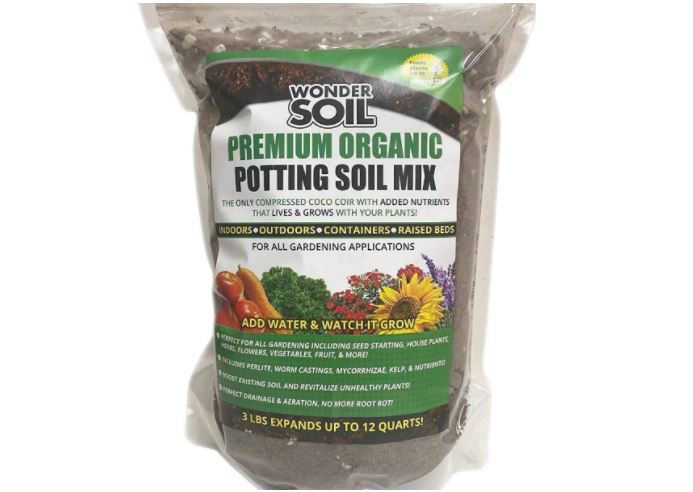
This type of potting soil is designed for indoor and outdoor plants. It includes ingredients that provide essential nutrients to the plants and ingredients that help excess water drain off.
Feed the Hibiscus
Fertilizing plants can be a difficult thing to determine. Some plants need a lot and some do not. Hibiscus is one of those plants that can definitely benefit from a few feedings each year. When you first plant your hibiscus, give a dose of a slow-release fertilizer. During the summer when the plant is producing blooms, it will benefit from regular feedings. Here are a few tips and fertilizer suggestions to use on your hibiscus.
- Slow Release Fertilizer for the plant’s initial feeding, for an early spring feeding, for a mid-summer feeding, for an early winter feeding, and for feeding after the tree has finished producing the first blooms of the season.
- High Potassium Compost to mix into the plant’s soil.
- Fish Fertilizer is given in diluted doses once a week during the summer growing season.
Note: You should select one type of fertilizer and not use them all together.
Signs that a hibiscus plant is over-fertilized are:
- Dropped Leaves
- Few Blooms
- No Blooms
- Yellowed Leaves
Water the Hibiscus
Learn to water your plants properly and you will have healthy plants in return. In contrast, if a plant is not watered properly, it is more susceptible to disease and pest infestations. Here are some tips for how to water an Orange Hibiscus:
- Water the hibiscus at least once a day, sometimes twice will be necessary
- Give the hibiscus around two inches of water each week
- Water with a soaker hose to ensure that the soil is thoroughly soaked but the leaves do not get wet
Symptoms of an underwatered hibiscus are:
- Top leaves that are yellowing
- Leaves that are dropping
- Symptoms of an overwatered hibiscus are:
- Middle and bottom leaves that are yellowing
Note: A great way to make sure all your plants are properly watered is to use a plant watering app. Here are a few app options to help answer all your plant watering quandaries:
Prune the Hibiscus
This is a part of plant care that is necessary to encourage new and healthy growth in these plants. Pruning should be done in the fall so that the plant has time to rest during its winter dormancy.
Clean the Hibiscus
This important part of plant care will reduce diseases and pest infestations. This should be done anytime a pest or disease is noticed, but it should be done regularly before bringing plants in for the winter. Options for cleaning a hibiscus are:
- Spray the leaves with a mixture of liquid detergent and water. Dry them with a clean towel.
- Spray the leaves with neem oil.
- Spray the leaves with a garden hose.
Purchase the Hibiscus
Now that you know the basic care requirements of this plant, it’s time to get one of your own. The following are shops that have great reviews and great products ready for purchase.
FAQs
Question: Can Orange Hibiscus be Propagated?
Answer: Yes, this is actually a very easy thing to do. Here are the steps:
- Select a time in late spring to propagate your hibiscus
- Select a soft and healthy stem that has nodes and leaves on it
- Cut off the stem with a sterile cutting utensil
- Dip the end of the stem in a rooting hormone
- Set the cutting into a container filled with moist potting soil
- Cover the container with plastic to hold in moisture
- Set the container in a warm place but out of direct sunlight
- Water the soil regularly but allow excess water to drain out
- Transfer the cutting to a permanent location when new growth appears
Question: Is There Only One Variety of Orange Hibiscus?
Answer: No, there are actually many different types of hibiscus that are orange. These plants produce flowers that have a wide range of orange shades, accent colors, and petal patterns. They are all beautiful in their own way, and once you see them, you may want to collect them all. A few varieties that may interest you are:
Double Dip: This Orange Hibiscus features flowers with more fluffy golden-orange petals.
Feel the Burn: This Orange Hibiscus features flowers with an unusual pattern. Its petals are dark orange with yellow markings that resemble fire sparks. In the center of the flower is an eye of soft pink.
Marmalade Sky: This Orange Hibiscus features flowers with large and delicately flowing petals. The color of the petals is a sherbet orange with rings of bright orange throughout them and a center eye colored in a reddish pink.
Question: What Types of Pests and Diseases do Orange Hibiscus Plants Face?
Answer: These plants deal with numerous types of pest infestations and diseases, but fortunately, most are preventable and treatable. Here are a few of the most prominent problems these plants can face and how the problem should be cared for:
Aphids: This insect infestation looks like tiny globular bugs clustered onto leaves and stems. Symptoms of this type of infestation are:
- Leaves that are yellowing
- Leaves that are growing crooked
- Leaves that have had their growth stunted
- Black and sticky residue on the plant
- Honeydew trails on the plant
The most effective way to deal with an infestation of aphids is to introduce predatory insects into your garden and naturally get rid of the ants. Ants feed on aphids and for this reason, they will fight to protect aphids from predatory insects such as ladybugs and lacewings. If you can introduce predatory insects into your garden while removing the ants, you may succeed in ridding your plants of aphids as well.
Fungal Infections: This type of infection shows up on plants when they are exposed to wet conditions and do not have enough air flowing through their stems and leaves. It can look like a grayish-brown coating and can cause leaves and stems to wilt. To deal with this type of infestation, apply a fungicide to the plant and consider these preventative measures:
- Remove stems, leaves, and fruit that have been infected
- Remove debris from around the plant
- Only water the soil of the plant rather than its leaves
Spider Mites: Symptoms of this type of insect infestation are:
- Leaves that have yellow, white, or tan spots on them
- Leaves that have tiny red or white spots that move around on them
- Leaves that have a cotton-like webbing covering their undersides
The most effective and natural way to deal with an infestation of spider mites is to introduce predatory insects into your garden. Predatory insects include ladybugs and parasitic mites. Other ways to deal with this type of infestation are to apply insecticidal oil or neem oil to the plants.
Adorn Your Yard with Orange Hibiscus
There is no doubt that this plant is stunningly beautiful. If you want to spruce up your backyard or patio garden, you cannot go wrong with an Orange Hibiscus. But, the good qualities of this plant do not stop there. Not only are they pleasant to look at, but they are also pleasant to care for. These plants don’t ask for much in return for offering you a beautiful yard adornment.
Now that you know all that is necessary for growing and properly caring for these plants, there is no reason why you should have a few around. This is your chance to garden simply and beautifully.
If this article has benefitted your hibiscus gardening skills, then you might be interested in learning about other types of plants. Jardin HQ exists to help gardeners of all skill levels grow the best fruit, vegetables, and flowers. Search our main page for any particular gardening topic that intrigues you.


